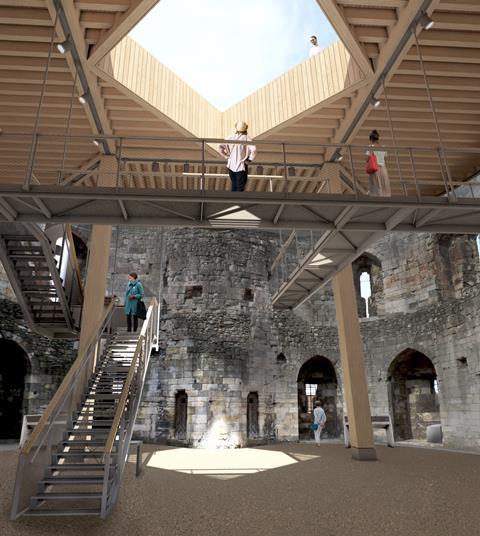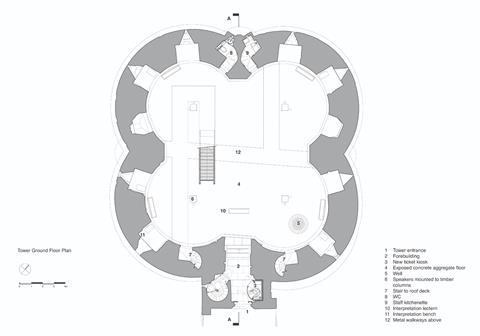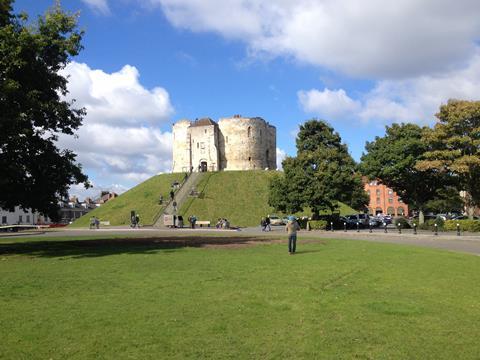Controversial scheme at city’s 13th-century Clifford’s Tower revised after original proposal prompted heritage backlash

Work has started on Hugh Broughton Architects’ controversial Clifford’s Tower project in York after revised proposals won planning this autumn.
The £3.4m scheme ended up in the High Court three years ago after objectors launched a judicial review claiming the proposals - which won planning in 2016 - were “ugly beyond belief” and harmful to views of the tower and mound on which it stands.
The case was thrown out but client English Heritage rethought the brief and Broughton went back to the drawing board. The firm’s new, scaled-back scheme won planning in September and main contractor Simpson was due to sart work this week, later than planned because of the covid-19 pandemic.
It will see a viewing platform installed inside the grade I-listed 13th-century structure.

The most contentious element of the 2016 proposals was a single-storey visitor centre which would cut into the base of the earth mound – built by William the Conqueror in 1068 – on which the tower is built.
The visitor centre, which some objectors had described as resembling a “toilet block”, has been replaced in the new proposals by an English Heritage-branded tuk tuk selling tickets and guidebooks.

The other main element, a viewing platform built inside the tower and supported by timber columns, will be built just below roof level to avoid affecting views of the tower, with light-weight walkways suspended from beneath providing visitors with access to previously unseen first-floor features.
A staff WC and kitchenette will also be built inside the walls of the tower. The scheme is due to finish next summer.

The project team includes conservation architect Martin Ashley Architects.
Built between 1240 and 1275, the stone tower was largely destroyed by an explosion in 1684, reducing the building to a shell.
















1 Readers' comment